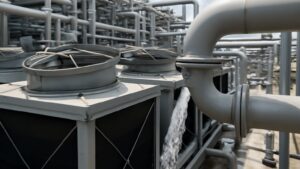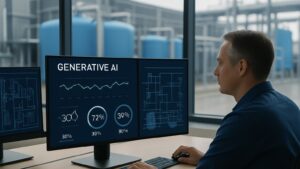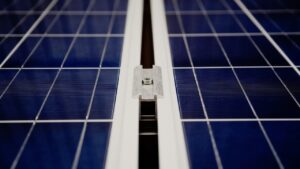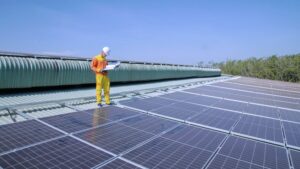The optimization of energy efficiency in data center white spaces is a critical issue in the sustainable digital world of today. White spaces, which house servers, storage units, and other IT hardware, are frequently the main energy users and heat producers. So, confinement measures have become essential. It enhances white space performance, minimizes energy waste, and ensures optimal thermal management. This article delves into the diverse range of containment strategies available for white space performance in data centers. It also examines the advantages and difficulties they present. We will also give a broad overview by covering everything from tried techniques to impactful innovations. As a result, data center operators will be able to make wise choices and remain ahead of the curve,
White Space Performance in Data Centers: Separating Hot and Cold Air Streams
Isolating the hot and cold air streams is a key component of efficient white space containment. Furthermore, data centers can guarantee that cooling resources are used effectively by limiting the mixing of these air streams. They can also lower energy consumption and the danger of hotspots or thermal imbalances.
Hot Aisle Containment
Installing enclosures or barriers around the hot aisles is a common method of hot aisle containment systems. It keeps the hot exhaust air from mingling with the cool supply air. Furthermore, a variety of materials can be used to implement these confinement systems. It includes plastic tents, curtains, and rigid panels.
Data centers can greatly increase the effectiveness of their cooling systems. This is by trapping the hot air inside the hot aisles. Moreover, there is less need for cooling and less energy loss. This is because the hot air can be extracted from the white area more successfully.
Cold Aisle Containment
A cold aisle containment system is an alternative that can be helpful for white space performance in data centers. It encloses the cold aisles where cold supply air is transported to the server inlets. This method aids in maintaining a steady and regulated flow of cold air. As a result, it guarantees that the servers get the ideal cooling they need.
Cold aisle containment systems sometimes include elements like doors or curtains at the extremities of the aisles. It helps to reduce the mixing of hot and cold air streams. So, this technique can be especially useful in high-density computer settings seen in data centers. This is where precision cooling is necessary to preserve peak performance and avoid hotspots.
White Space Performance: Flexible and Modular Containment Solutions
The need for adaptable and modular containment solutions grows as data centers change. This is to accommodate shifting workloads and infrastructure demands. These techniques enable easy reconfiguration of containment systems. They also allow scaling and customization to meet the evolving demands of the data center.
Rigid Partition Systems
Installing solid walls or other barriers inside the white space is a component of rigid partition systems. It divides the area into zones for hot and cold air. Furthermore, customizing these walls to meet the unique architecture of the data center involves constructing them from materials. It includes plastic, metal, or even modular panels.
The capacity to establish discrete thermal zones is one of the main benefits of rigid partition systems. It guarantees that cooling resources are directed precisely where they are required. These systems may also be made to be flexible and scalable. This is to meet changing data center requirements in the future. As a result, this allows for future expansions or reconfigurations.
Flexible Partition Systems
Flexible partition systems provide a more dynamic approach to confinement compared to rigid partitions in white space performance in data centers. Usually, these systems employ screens, curtains, or other lightweight textiles. It temporarily divides the white space into several areas.
Systems for flexible partitioning are especially helpful in data centers when equipment configurations or layouts change regularly. Moreover, they still effectively separate hot and cold air streams. They are also easily repositionable or adjusted as needed. This is to minimize operational disturbances.
White Space Performance in Data Centers: Leveraging Advanced Technologies
The data center sector is seeing the rise of cutting-edge technologies. These exceed the capabilities of white space performance. Let us look at them ahead:
Computational Fluid Dynamics (CFD) Modeling
One effective technology that can help with data center containment strategy design and optimization is CFD modeling. Furthermore, data center operators can see and evaluate the possible effects of different confinement options before installation. This is by generating intricate simulations of airflow patterns within the white space.
Data centers can maximize energy efficiency by pinpointing hotspots and fine-tuning containment tactics. Optimizing airflow patterns using CFD modeling can also achieve this, reducing expensive trial-and-error procedures and allowing for customized containment solutions. This is to meet the unique requirements of the data center.
Intelligent Containment Systems
Intelligent confinement systems go beyond simple containment methods for white space performance in data centers. This is by utilizing sophisticated sensors, automation, and machine learning algorithms. It dynamically controls cooling resources and also airflow inside the white space.
Additionally, by continually monitoring humidity, temperature, and airflow patterns, these systems employ predictive analytics. It identifies and resolves any thermal problems before they arise. Moreover, intelligent containment systems can optimize energy efficiency in real time. This is by dynamically modifying containment barriers, vent apertures, or even cooling unit settings. It is according to shifting workloads and ambient conditions.
Immersive Cooling Technologies
Immersion cooling solutions are becoming more and more popular. This is a possible remedy for high-density computer settings. Through the use of dielectric liquids, these technologies effectively remove heat from IT equipment. This is by burying it in the liquid.
Immersion cooling systems are a more compact and energy-efficient option for data centers. They do not require complicated air handling and containment systems. They do, however, also bring with them new difficulties. It includes managing liquids, ensuring compatibility with current infrastructure, and raising environmental issues.
Overcoming Implementation Challenges
Effective confinement techniques have many advantages, but putting them into practice can be difficult. Data centers have to deal with several issues This section will look at ways to get around these challenges. it will also make sure the containment approach is implemented successfully.
Initial Investment and Operational Costs
It is necessary to make an initial investment in labor, supplies, and equipment when implementing data center containment techniques. Data centers must carefully assess the possible savings in energy and operating costs. It helps to make sure that the investment in containment solutions is appropriate. It also ensures a respectable return on investment
Integration with Existing Infrastructure
Data centers frequently have to adapt containment solutions into their current infrastructure and white space layouts. This may provide compatibility issues and interfere with current operations. It can also lead to the need for close planning and cooperation.
Maintenance and Monitoring
Sufficient confinement tactics necessitate continuous upkeep and observation. It guarantees their sustained functionality and efficiency. Furthermore, data centers need to set up procedures. This is for routine containment system maintenance, repairs, and modifications. They also need to put in place monitoring systems. It helps to keep tabs on energy efficiency and thermal performance.
Also read: What is the role of nuclear energy in powering data centers?
To Sum Up
Data centers need to put sustainability and energy efficiency first. This is to fulfill the increasing needs of our globalized society as the digital economy grows. To do this, confinement measures for white space performance in data centers that work must be put into practice. Furthermore, the solutions covered in this article provide data centers with a route. This is toward optimized thermal management, less energy waste, and a smaller carbon footprint.
However, successful implementation requires careful planning and consideration of challenges. It also requires a commitment to continuous improvement. Data center professionals can gain valuable insights by attending the upcoming Energy Efficiency for Data Centers Summit in Dallas TX, USA on May 16-17, 2024. They can also network with industry leaders, and stay ahead of the curve in this evolving landscape. So, embrace the future of sustainable data centers by immediately registering for the event!





